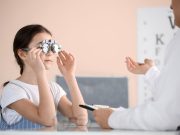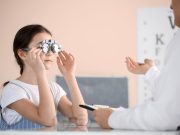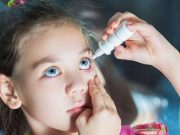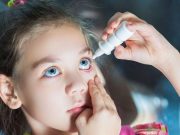Tag: Myopia (Nearsightedness)
Highly Aspherical Lenslet Spectacles Reduce Myopia Progression
Wearing spectacles with highly aspherical lenslets versus single-vision spectacle lenses reduces myopia progression and axial elongation over five years
Daily Screen Time Tied to Higher Myopia Risk
Each daily one-hour increment of digital screen time associated with 21 percent higher odds of myopia
Discontinuing Multifocal Contacts Does Not Diminish Treatment Effect in Myopia
No evidence seen for loss of treatment effect with discontinuation of multifocal contacts in older teenagers with myopia
Global Prevalence of Child Myopia Is Increasing
Higher proportion of myopia exhibited in those living in East Asia or urban area and in females, adolescents, and high school students
Outdoor Exposure Patterns Associated With Less Myopic Shift in Children
Isotemporal substitution of patterns with ≥15 minutes, 2,000 lux for other outdoor exposure patterns linked to less myopic shift
Models Can Predict Long-Term Visual Acuity in Highly Myopic Eyes
Baseline BCVA, prior myopic macular neovascularization, age, category 4 myopic maculopathy are most important predictive variables
Atropine 0.01 Percent Eye Drops Do Not Slow Myopia Progression
Findings seen in children aged 5 to 12 years with low-to-moderate bilateral myopia
Low-Dose Atropine Treatment Slows Pediatric Myopia Progression
Greater benefits seen with 0.01 percent dose over three years versus 0.02 percent dose
Secondhand Smoke Exposure Linked to Myopia in Children
SHS exposure linked to greater myopic refraction, longer axial length, increased odds of developing moderate and high myopia
Repeated Low-Level Red-Light Intervention Prevents Myopia in Children
RLRL effective for preventing myopia in children with premyopia, with up to a 54.1 percent reduction in incidence














